
-
Find the right food for your petTake this quiz to see which food may be the best for your furry friend.Find the right food for your petTake this quiz to see which food may be the best for your furry friend.Featured products
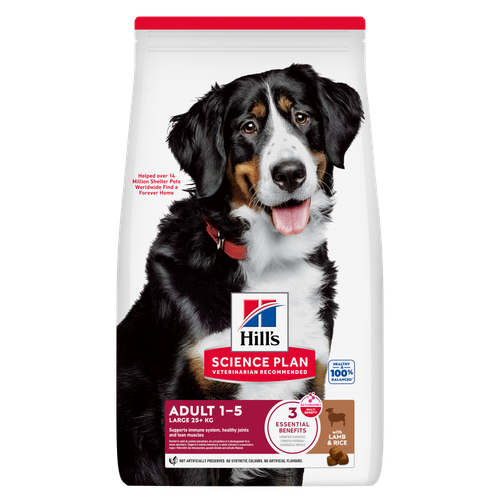 Large Breed Adult Dog Food
Large Breed Adult Dog FoodHill's Science Plan Large Breed Adult Dog Food with Lamb & Rice is a complete pet food, specially formulated with ActivBiome+ Multi-Benefit Technology.
This food is specifically designed to fuel the energy needs of large breed dogs during the prime of their life.Shop Now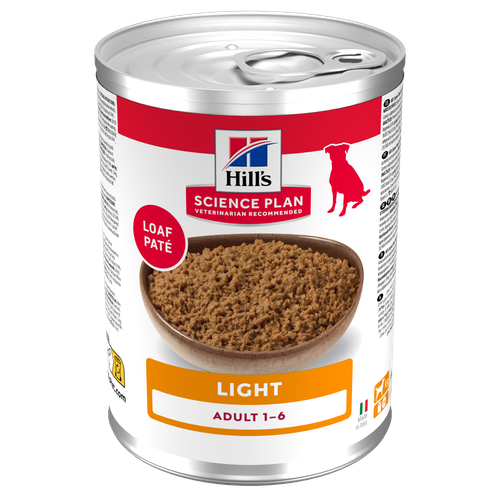 Adult Light Dog Food
Adult Light Dog FoodHill's Science Plan Light Adult Wet Dog Food is a complete premium pet food for adult dogs that tend to gain weight easily. This deliciously smooth loaf is formulated to deliver the appropriate amount of energy to support weight maintenance in adult dogs.
Shop Now Perfect Digestion Large Breed Puppy Food
Perfect Digestion Large Breed Puppy FoodPrecisely balanced nutrition with Hill's ActivBiome+ prebiotic blend actively contributes to supporting digestive health and overall wellbeing to help your pet feel their best
Shop NowFeatured products CULINARY CREATIONS ADULT CAT FOOD
CULINARY CREATIONS ADULT CAT FOODHill's Science Plan CULINARY CREATIONS Adult cat food with Salmon & Carrots was formulated to provide a great-tasting experience to cats. Its delicious flavour and texture are combine with essential nutrients to support cats' optimal health during the prime time of their life. Specially formulated with high-quality salmon protein, essential taurine for heart health & balanced minerals to support kidneys & bladder.
Shop Now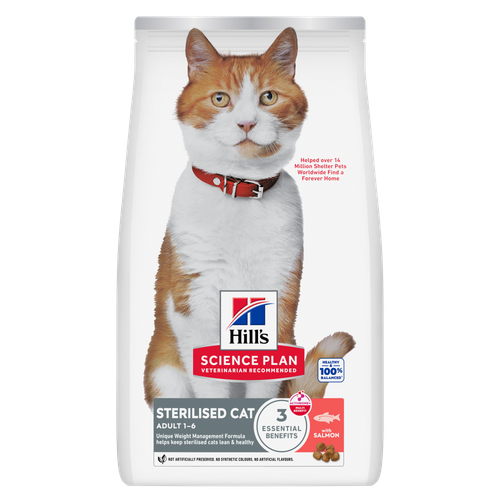 Sterilised Adult Cat Food
Sterilised Adult Cat FoodHill's Science Plan Adult Sterilised Cat Dry Food with Salmon is specially formulated with ActivBiome+ Multi-Benefit Technology. It is a precisely balanced nutrition, tailored to meet the needs of sterilised cats, to help keep sthem lean & healthy.
Shop Now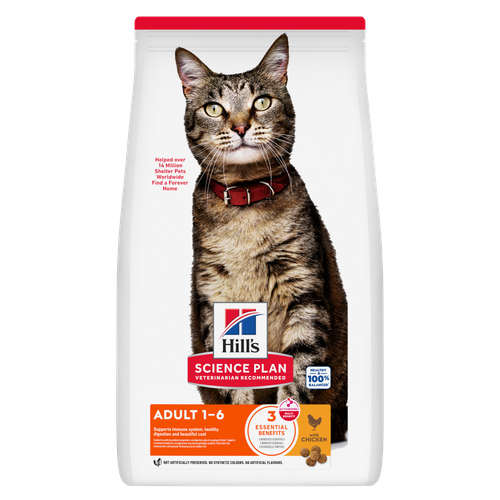 Adult Cat Food
Adult Cat FoodHill's Science Plan Adult Cat Food with Chicken is a complete pet food, specially formulated with ActivBiome+ Multi-Benefit Technology.
This food is specially formulated to fuel the energy needs of cats during the prime of their life.Shop Now -
Dog
- Dog Tips & Articles
-
Health Category
- Weight
- Food & Environmental Sensitivities
- Urinary
- Digestive
- Joint
- Kidney
-
Life Stage
- Puppy Nutrition
- Adult Nutrition
- Senior Nutrition
Cat- Cat Tips & Articles
-
Health Category
- Weight
- Skin & Food Sensitivities
- Urinary
- Digestive
- Kidney
-
Life Stage
- Kitten Nutrition
- Adult Nutrition
Featured articles Microchipping: The Facts | Hill's Pet
Microchipping: The Facts | Hill's PetThe government has announced that as of April 2016, all dogs in the UK must be microchipped by law.
Read More The Incredible Science Behind Your Pet's Microbiome
The Incredible Science Behind Your Pet's MicrobiomeLearn what your pet's microbiome is, how it contributes to your pet's gut and overall health, and why nutrition is important in maintaining healthy microbiomes.
Read More Pet Nutrition: What Makes "Healthy" Pet Food Healthy? | Hill's Pet
Pet Nutrition: What Makes "Healthy" Pet Food Healthy? | Hill's PetIn people, the right diet is very important. If you are eating the wrong way for your metabolism, activity level, age and lifestyle you could end up with health issues.
Read More -


Concerned about how round your cat has become? It's easy for people to realise they've gained weight when their clothes get a little snug, but when it comes to your feline friend, it’s up to you to watch for the warning signs. If your cat needs to lose weight, follow these tips.
Spotting if your cat is obese
When you see your cat every day, it’s not always easy to spot a change in their weight, especially if they’re a longer-haired breed. For that reason, monitoring your cat’s weight throughout their life is really important. Spotting your cat’s weight trending in either direction gives you a big head-start to getting help before it’s too late.
Believe it or not, your cat losing weight should be a concern, too. Changes in weight – in either direction – can be caused by health conditions. Likewise, your cat’s weight can cause them health problems, too. If your cat shows signs of any health issues, be sure to talk with your veterinarian. They can determine whether or not your cat needs to shed some weight to improve their health, and check for any other health issues that might be a concern.
Lack of activity
Another sign you may have an overweight cat is when they’re less active than usual. Once a cat is spayed or neutered, they start to show signs of a slower metabolic rate, which means they may be less active and therefore need fewer calories. If the amount of calories being fed isn't adjusted properly, the cat may continue to gain weight and become obese.
The age of your cat also needs to be considered when monitoring activity level. Typically, older cats do become less active and therefore may need to eat less food. Sometimes, pet parents who adjust their cat’s food notice activity levels picking up as a result.


Tasty Tips
Are you overfeeding?
The first step in helping a cat lose weight properly is to control the amount of food you're putting in the bowl. With the help of your veterinarian, choose a complete and balanced food that matches your cat's current age and dietary needs. (Cats should also avoid human foods!)
Unsure about how much food to give your cat? Start by looking on the back of the package for the manufacturer’s recommendations. A few grams either way can make a big difference to a cat, so it may be a good idea to measure the portion with kitchen scales to make sure you’re being as accurate as possible.
Your cat’s daily food allowance should be divided into 4-6 meals if at all possible. This suits their digestion better and helps them to feel full throughout the day. Timer feeders can be really useful if you are out and about, and can even feed your cat while you sleep!
Discuss the exact amount and frequency with your veterinarian. Although the back of food packaging gives a general idea, your veterinarian is ultimately the best one to determine the type of food and the amount your cat should eat to lose weight or maintain a healthy weight.
Once you have the right food amounts on an appropriate feeding schedule, your next step is to incorporate proper (yet entertaining) exercise into your cat’s routine.
Help them exercise away the weight
Food adjustments alone can help cats avoid obesity, but for most, it needs to be a combination of diet and exercise. Playing with your cat is a great way to stimulate them, get them moving, and strengthen your bond with them.
Cats are natural predators so it's important for your cat to find playful ways to tap into this instinct. It can be fun for both cats and cat parents to set up new and creative games, such as hide-and-seek or miniature obstacle courses inside the house. If you don't have simple items in your house that your cat is interested in playing with, a few new toys may help get them engaged and ready to be more active. Check out our list of cat games you can play with your cat to get them moving.
Start by encouraging your cat to play for a few minutes a couple of times a day. Over the next few weeks, try to build up to several bouts of games a day. Cats naturally only like to play for about five minutes at a time, so it’s better to enjoy lots of short games rather than trying to force a marathon session.
Any increase in activity could help your overweight cat get leaner and even maintain a healthy weight consistently. Once they’re eating right and keeping a more active routine, your cat will truly be enjoying a higher quality of life - something all pet owners want for their affectionate companions.
Taking steps to maintain a healthy weight
Keeping your cat within a healthy weight range not only improves quality of life, it can also save you a lot of money. According to the PFMA, pet owners spend millions every year fighting health problems caused by obesity. Whether you have an obese cat now, one who's showing warning signs of being overweight, or just general concerns about their potential for obesity, taking steps to control your cat's food intake and activity level benefits the whole family.
To keep your cat maintaining a healthy weight, be sure to continually monitor their activity level, weigh their daily food intake, and have your vet regularly evaluate their weight and dietary needs. Also, consider asking your vet about a cat food specially formulated for cats after they have been spayed or neutered. This food can promote a decrease in your cat's metabolic rate to reduce the chance of weight gain.


Chrissie Klinger is an educator, writer and mother of two children, three dogs and three cats. Her dog Jake loves sitting on her lap every chance he gets! She enjoys living an active and eco-friendly lifestyle in rural Pennsylvania.
Related products
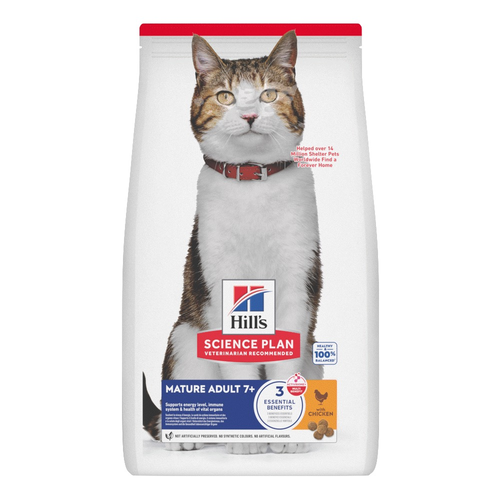
Hill's Science Plan Mature Adult Cat Food with Chicken is a complete pet food, specially formulated with ActivBiome+ Multi-Benefit Technology.
This food supports graceful aging in cats, providing a synergistic ingredient blend to help support energy & activity levels.

Hill's Science Plan CULINARY CREATIONS Adult cat food with Salmon & Carrots was formulated to provide a great-tasting experience to cats. Its delicious flavour and texture are combine with essential nutrients to support cats' optimal health during the prime time of their life. Specially formulated with high-quality salmon protein, essential taurine for heart health & balanced minerals to support kidneys & bladder.

Hill's Science Plan Adult Sterilised Cat Dry Food with Salmon is specially formulated with ActivBiome+ Multi-Benefit Technology. It is a precisely balanced nutrition, tailored to meet the needs of sterilised cats, to help keep sthem lean & healthy.

Hill's Science Plan Adult Cat Food with Chicken is a complete pet food, specially formulated with ActivBiome+ Multi-Benefit Technology.
This food is specially formulated to fuel the energy needs of cats during the prime of their life.
Related articles

Learn how your cat's poo can be a good indicator of her overall health, including how to spot unhealthy or abnormal cat poop and what it might mean.

Understand common skin issues in cats and how to manage them effectively. Learn signs and prevention, and get care tips. Find out more at Hill's Pet.

Cats with sensitive skin have special needs and even healthy cats can sometimes develop poor skin health. Learn more about sensitive skin symptoms in your cat, what you can do to help your pet feel more comfortable and get recommendations on sensitive skin cat food.

Learn about the causes of cat dermatitis, how to spot the symptoms and the best treatment options. Visit Hill's Pet for detailed guidance and tips.

Put your cat on a diet without them knowing
Our low calorie formula helps you control your cat's weight. It's packed with high-quality protein for building lean muscles, and made with purposeful ingredients for a flavourful, nutritious meal. Clinically proven antioxidants, Vitamin C+E, help promote a healthy immune system.
Put your cat on a diet without them knowing
Our low calorie formula helps you control your cat's weight. It's packed with high-quality protein for building lean muscles, and made with purposeful ingredients for a flavourful, nutritious meal. Clinically proven antioxidants, Vitamin C+E, help promote a healthy immune system.

